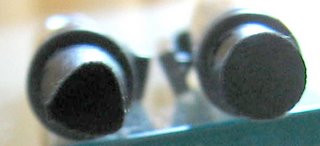Review - Update
Since posting the original review, I've now used the Sensorklear successfully on another 10D and a 1DMkII without any problems. In addition, I've received the following information from Parkside Optical Inc., makers of the Sensorklear.
In terms of expected longevity of the Sensorklear: "Depending on the level of contamination of the sensor, 100+ applications is standard."
With respect to cleaning the chamois tip: "SensorKlear is self-cleaning. Simply put the cap back on and give it a half-twist."
So, it appears that two of the three "unknown" questions have been answered. With respect to the potential damage issues, further monitoring is warranted and updates will be provided as experience dictates.
In terms of expected longevity of the Sensorklear: "Depending on the level of contamination of the sensor, 100+ applications is standard."
With respect to cleaning the chamois tip: "SensorKlear is self-cleaning. Simply put the cap back on and give it a half-twist."
So, it appears that two of the three "unknown" questions have been answered. With respect to the potential damage issues, further monitoring is warranted and updates will be provided as experience dictates.







